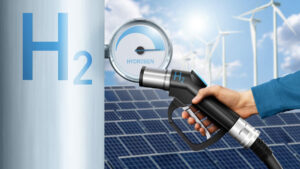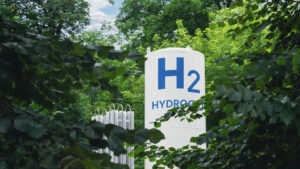COAG has caught the hydrogen hype, wants your thoughts on how to do it

Pic: Yuichiro Chino / Moment via Getty Images
The federal government has not so far jumped on the hydrogen hype train, but the states have and COAG wants submissions on its nine-piece agenda by the end of the month.
The state-federal government body on Monday released nine issues papers covering everything from using hydrogen in the gas pipeline network to transportation and how it could support electricity systems.
READ: Science just found a way to make hydrogen with less energy
Even the federal government may be finally getting on board.
Resources minister Matt Canavan valued the opportunity, one not seen to be a viable option by experts until at least 2040, in terms of jobs and exports.
“Key export markets such as Japan and Korea are shifting their energy consumption towards hydrogen and we need to be ready to grasp that opportunity,” he said late on Monday.
Indeed, Japan is a driving force behind the Australian enthusiasm for hydrogen but with the sector still being researched by CSIRO and companies like Hazer (ASX:HZR), and car companies still at the exhibition stage, an industry does not yet exist.
- Subscribe to our daily newsletter
- Join our small cap Facebook group
- Follow us on Facebook or Twitter
The federal government says it’s spent $100m since 2017 on hydrogen projects.
Half was spent on a Japanese-led coal-to-hydrogen project which Environmental Clean Technologies (ASX:ECT) is hoping to get involved with.
It’s unclear what the other half was spent on, although it may include $22.1m in ARENA funding of 16 hydrogen export research projects and $3.1m to help turn the former Toyota car making site in Victoria into a hydrogen car facility.
It’s a state-backed fight so far
So far the states have been the major backers of hydrogen technology, such as Victoria’s hydrogen investment program and Queensland’s upcoming hydrogen industry development fund.
South Australia and Western Australia are fighting to be the country’s hydrogen hubs.
South Australia has funded four hydrogen projects via its $50m Renewable Technology Fund, putting $17m in total into a “Hydrogen Super Hub” at Crystal Brook, a Hydrogen Utility at Port Lincoln; a hydrogen demonstration and training project at the University of South Australia; and Hydrogen Park in Adelaide where Australia’s largest electrolyser to produce hydrogen for feeding into the gas network is being built.
Western Australia has the Renewable Hydrogen Council which is expected to deliver its recommendations on a Western Australian renewable hydrogen industry early next year.
COAG (Council of Australian Governments) wants submissions by July 28 on:
- Looking at how it’s made and challenges to producing at scale.
- How to attract the kind of investment needed to build a self-sustaining industry, and what kinds of government support it would need.
- Opportunities for developing an export market.
- Guarantees of origin and what kinds of traceability and regulatory systems will be needed.
- Developing community support for a new type of fuel.
- Issues around distributing hydrogen via gas networks.
- How the super-high electricity needs of hydrogen manufacturing might play out in Australia’s electricity system and how it might be able to help with grid resilience.
- The benefits, risks and barriers to using hydrogen as a transport fuel in Australia by 2030.
- And how hydrogen can be used by industrial users either as a chemical feedstock or for heating.
UNLOCK INSIGHTS
Discover the untold stories of emerging ASX stocks.
Daily news and expert analysis, it's free to subscribe.
By proceeding, you confirm you understand that we handle personal information in accordance with our Privacy Policy.








